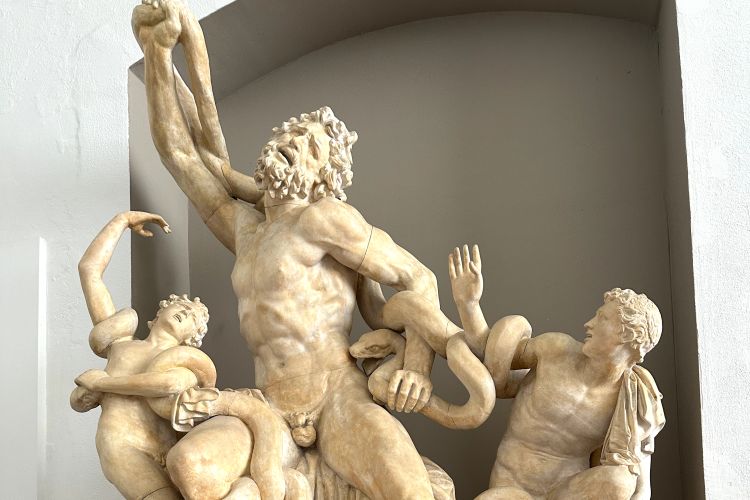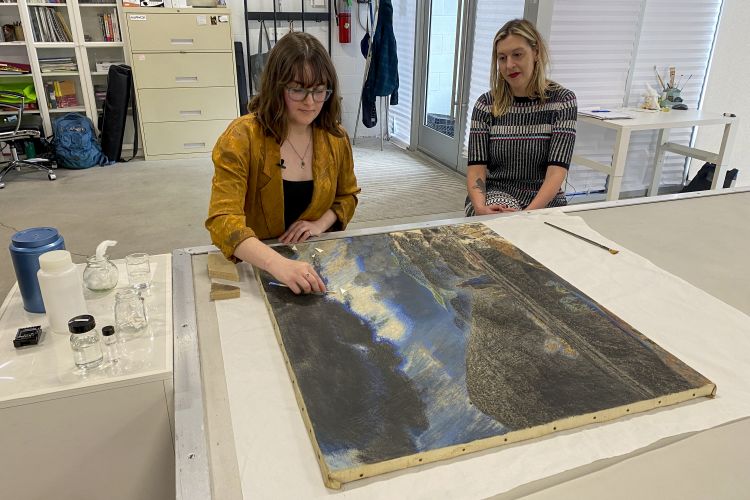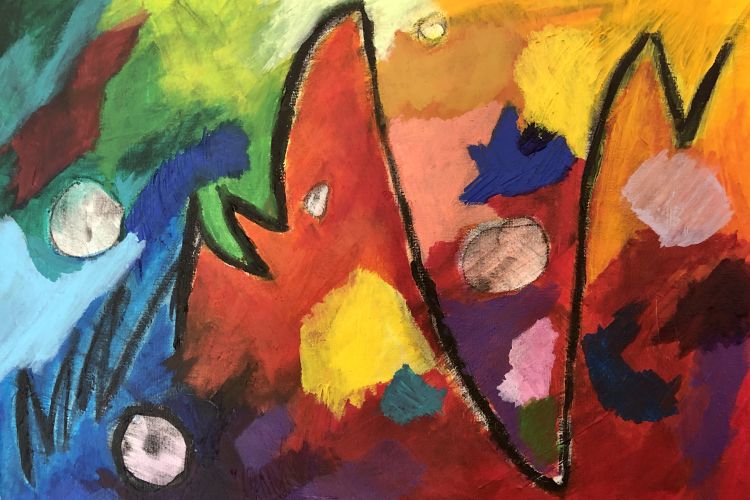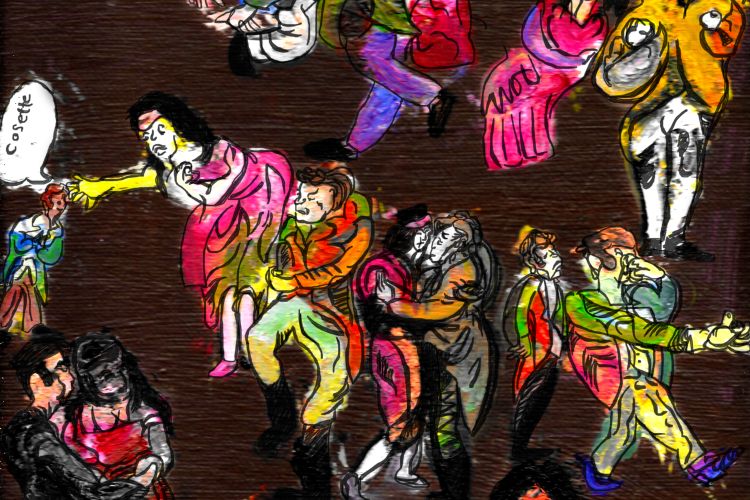STORIES FROM PAFA
Exploring Difficult Themes Through Art
The spark for Maura Roncace’s (MFA ’20) next project can come from anywhere.
While in a folklore class at the University of Pennsylvania, she learned about African American author and anthropologist Zora Neale Hurston and her book Barracoon. The book, written in the early 20th century, was based on interviews with the last living survivor of the Middle Passage.
“It’s a narrative of one of the last surviving slaves in the US and he described his Mid-Atlantic passage and it really just like struck a chord in me, it was devastating,” she said. “I was like I have to do something.”
To process her feelings, Roncace is planning a project of bronze sculptures.
“Maybe one or two torsos, and hands and heads too. As if they were coming out of the water or drowning because so many people drowned in the Middle Passage,” she said. “It will hit you right where it hurts and I couldn’t get it out of my head.”
Her folklore class at Penn was part of her anthropology minor and participating in the PAFA-Penn program.
For more than 85 years, PAFA has coordinated a BFA degree program with the University of Pennsylvania, combining the academy’s fine arts studio training with an Ivy League liberal arts education at Penn. Artists have three years of studio training at PAFA and complete 16 classes at Penn.
Students spend their first year, the Foundation year, studying at PAFA and are then eligible to begin taking classes at Penn.
“I wanted to go do something that gave me equal parts academics and art because I have a lot of interests. I’m a really big nerd,” Roncace said.
After graduating from Penn with a BFA in Fine Arts in 2018, Roncace enrolled in PAFA’s MFA program. She views her undergraduate experience as a boot camp in technical training and sees the MFA program as an opportunity to focus on her work and have meaningful critiques with her professors and peers.
Not that the critique process is easy.
“You make these pieces and you put your heart and soul into this and you’re not always ready to have people tell you everything that’s wrong,” she said. “It’s nerve wracking, but you come out feeling like you have a lot to do but in a good way.”
While the feedback can be strong, Roncace said it’s always constructive. She says her peers are good at reading each artist and their reaction, and know when someone wants their work to spark a conversation.
She recently had a group critique she called intense and said the artist being critiqued seemed really happy with the conversation sparked by their work. But those intense sessions can lead to new projects.
“My visiting critic, Sondra Perry, told me to try doing an installation and it’s something I’ve been wanting to do but I’ve been afraid to do, so hopefully I will do it.”
Much of her large-scale representational paintings and sculptures focus on religious symbols and her personal interest in the Catholic Church.
“I grew up Catholic,” she said. “I’m not Catholic or religious at all not but it has definitely left an impression on me.”
She’s planning an installation that will explore the experience of walking into a church. “Something that says ‘I’m in church and I’m 12 again. I painted my nails so I could pick off my nail polish and not pay attention to what’s going on.’”
She views her artwork as a culmination of her experiences growing up and the academic subjects that interest her. She hopes the immersive natures of the installation will start a discussion and maybe ignite an idea in someone else.




